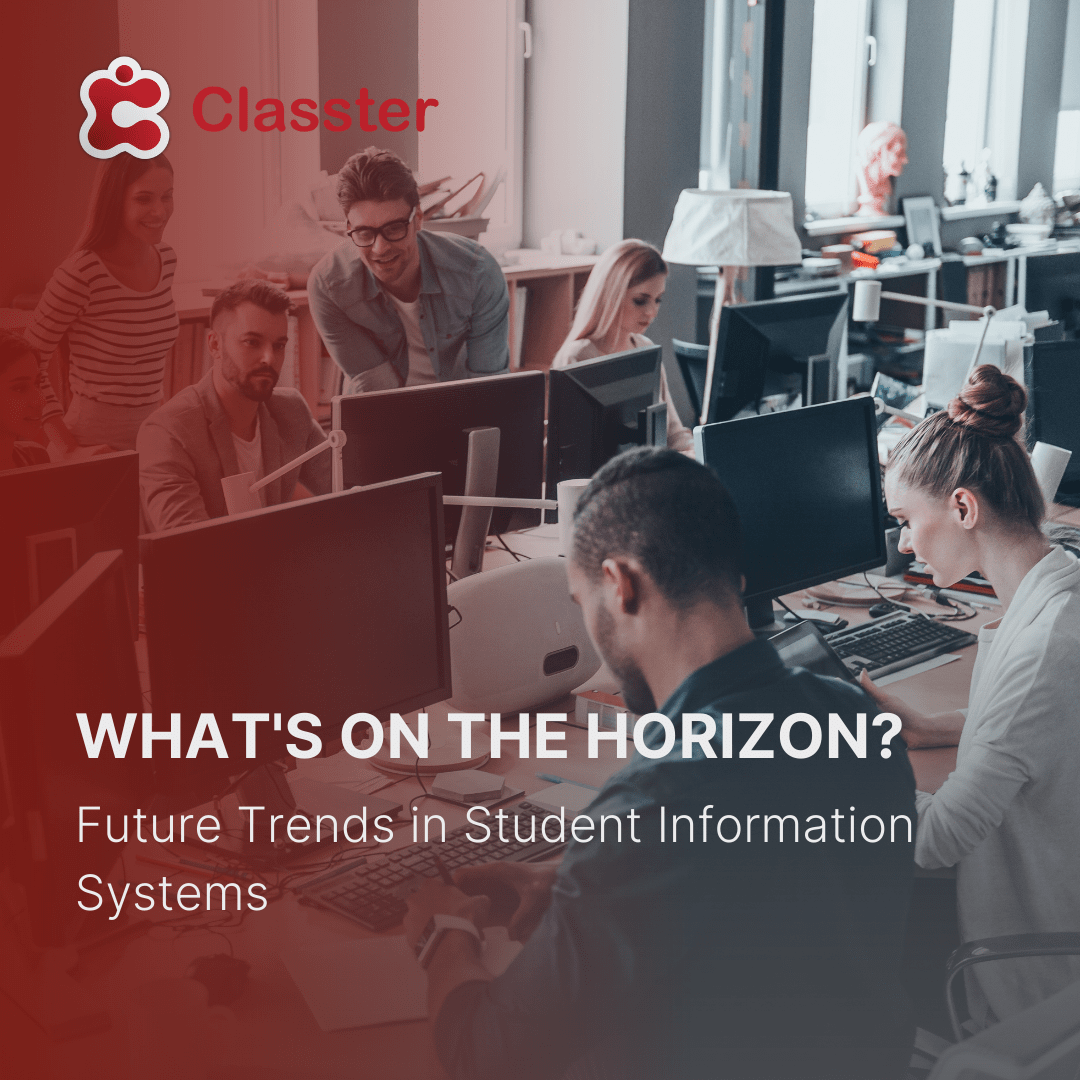Student Information Systems (SIS) have long been the backbone of educational institutions, facilitating administrative tasks, organizing student data, and supporting effective communication between stakeholders, among various other minor or major features. As technology continues to advance at a rapid pace, the future of SIS is promising. Exciting trends in that area hold the potential to revolutionize the way we manage and enhance the learning experience. In this article, we will dive into the most emerging trends for Student Information Systems and explore how they are expected to shape the future of education.
AI-Powered Features
One of the biggest advancements in Student Information Systems (SIS) is the integration of Artificial Intelligence (AI). This allows SIS systems to analyze a large amount of data and gain insights into student performance and learning patterns. With this data-driven approach, educators can make informed decisions, identify struggling students, and create personalized learning plans. Additionally, AI can automate administrative tasks such as grading, freeing up teachers’ time and allowing them to focus on teaching and mentoring students. Artificial intelligence can play a crucial role in SIS by analyzing vast amounts of data and generating valuable insights. By utilizing AI algorithms, student performance patterns can be identified, allowing educators to provide targeted interventions and support.
Blockchain Integration
Blockchain stores a series of transactions in form of a sequence of linked blocks. Hence, the concept of a single decentralized ledger is easily maintained. Transactions and interactions that take place among the participants accessing the distributed and decentralized but cooperative blockchain network are held through a single ledger. A student information system (SIS) can make use of a decentralized and reliable ledger that stores vital information, such as student certificates and transcripts. The implementation of blockchain in the education sector provides a new horizon for set of non-functional requirements security, immutability, and independence.
Virtual and Augmented Reality in SIS
The potential of Virtual Reality (VR) and Augmented Reality (AR) in revolutionizing the way students learn complex concepts is immense. In the future, schools will incorporate such technologies to create interactive and immersive learning experiences. For instance, students will be able to visit virtually significant locations to explore historical events or conduct virtual experiments in science classes. AR can enrich the learning environment by overlaying digital information onto the physical world, providing real-time data and interactive elements. The integration of VR and AR in schools not only increases student engagement but also caters to different learning styles, making education much more inclusive and accessible. As these technologies become more and more affordable, educational organizations are likely to leverage them to foster better understanding and retention of knowledge.
Mobile-First Student Information Systems
With the extended use of mobile devices and smartphones, education technology took a leap forward. Mobile-first SIS applications are emerging providing all stakeholders with the convenience of accessing student information on the go. Mobile SIS offers a number of benefits such as instant notifications, real-time updates, and seamless communication, fostering increased engagement and involvement in students’ educational journey.
Data Security and Privacy Enhancements
As technology and data become more important in our lives, it is crucial to prioritize strong data security and privacy measures in Student Information Systems (SIS). SIS contain sensitive information about students, faculty, and staff, so it is essential to implement advanced security protocols to protect against cyber attacks and unauthorized access. In the future, SIS will likely use advanced encryption and multi-factor authentication to ensure data accuracy and prevent breaches. Educational institutions need to prioritize compliance with data privacy regulations like the General Data Protection Regulation (GDPR) and the Family Educational Rights and Privacy Act (FERPA).
Integration with Learning Management Systems (LMS)
In education, the main challenge is how out of a vast amount of information, useful data can be transformed into actionable and useful information for educators, administrators and decision makers. Two major systems have emerged as the standard IT infrastructure for organizations that need to digitalize academic and backend processes and offer distance learning: the Student Information System (SIS) and the Learning Management System (LMS). By seamlessly combining these two systems, educational institutions can streamline data flow and communication between administrators, instructors, and students. This integration allows for a unified platform experience where educators can manage course content, assignments, and grading while leveraging SIS data for a more holistic view of their student performance. Such integrations can drive to more efficient and data-driven approaches to education, ultimately leading to improved learning outcomes.
Personalized Learning and Adaptive Assessments
The use of personalized learning technology to craft student educational programs has picked up steam over the past years as innovations advances. As technology prices drop, the ability for school districts to use technology to help students learn at their own pace has become more of a reality, and SIS will play a significant role towards this direction. By leveraging the vast amount of data collected, SIS can identify each student’s strengths, weaknesses, and learning preferences, allowing educators to create personalized learning pathways. Adaptive assessments are a crucial component of personalized learning, as they dynamically adjust the difficulty level of questions based on the student’s responses. This approach ensures that students are continuously challenged at their appropriate skill level, promoting deeper understanding and engagement.
The future of Student Information Systems is promising, with emerging trends set to revolutionize the way we approach education. From AI-powered features and blockchain integration to VR-enabled learning experiences and personalized learning, these innovations hold the potential to transform the learning landscape for the better. As technology continues to advance, educational institutions must embrace these trends to stay at the forefront of educational excellence. The future is bright, and the possibilities are endless as we embark on this exciting journey to shape the future of education through Student Information Systems.








